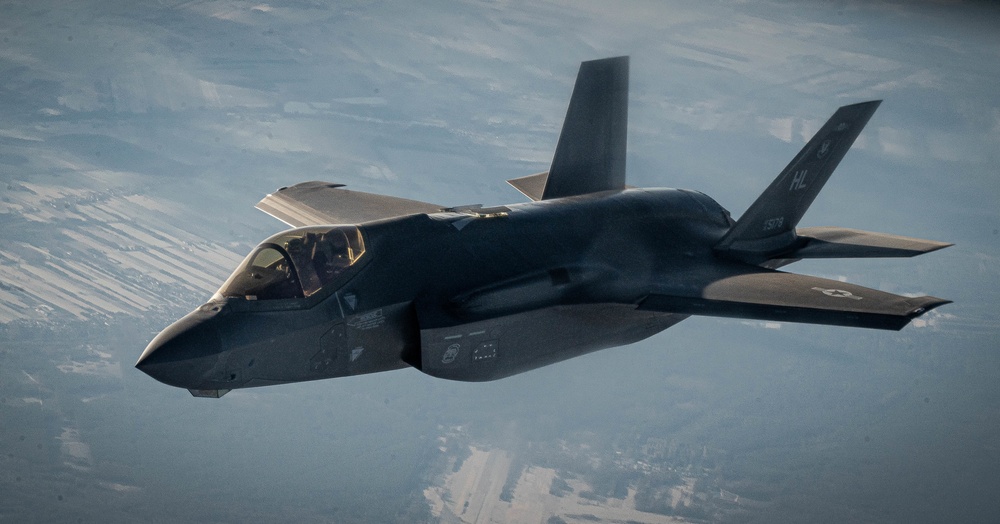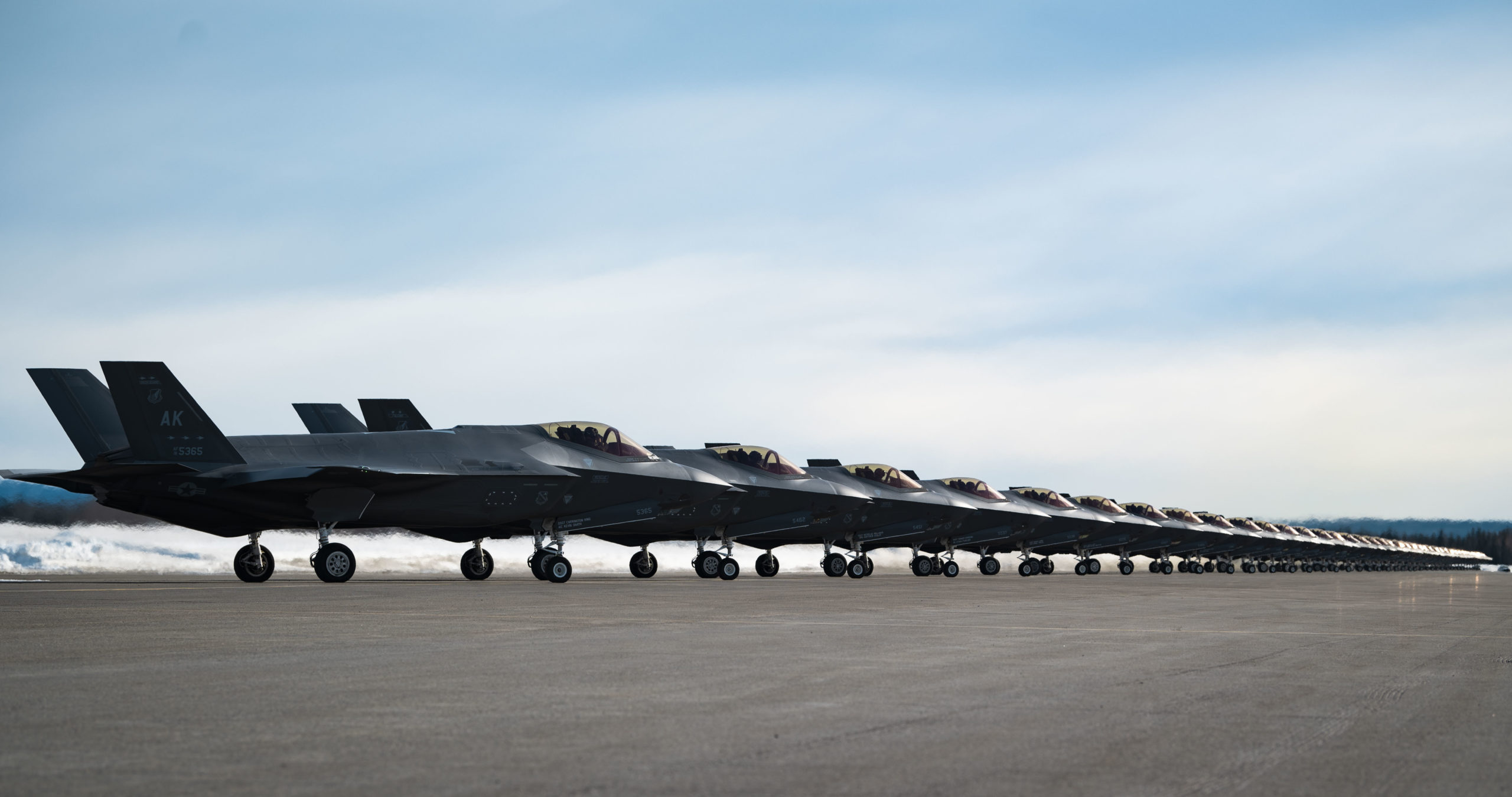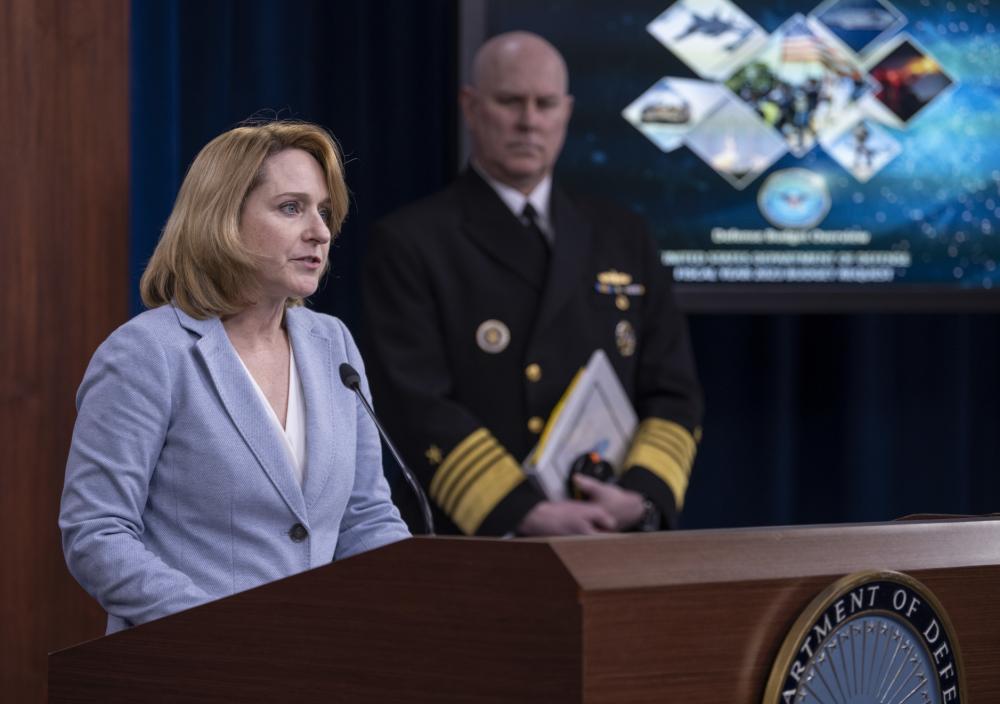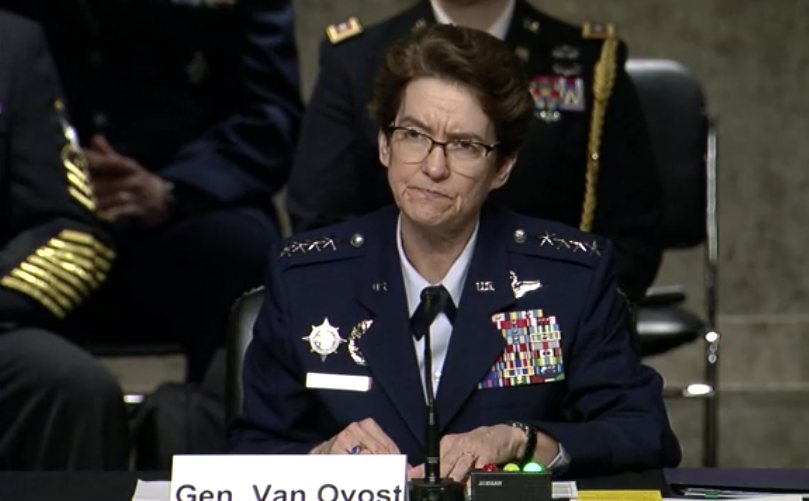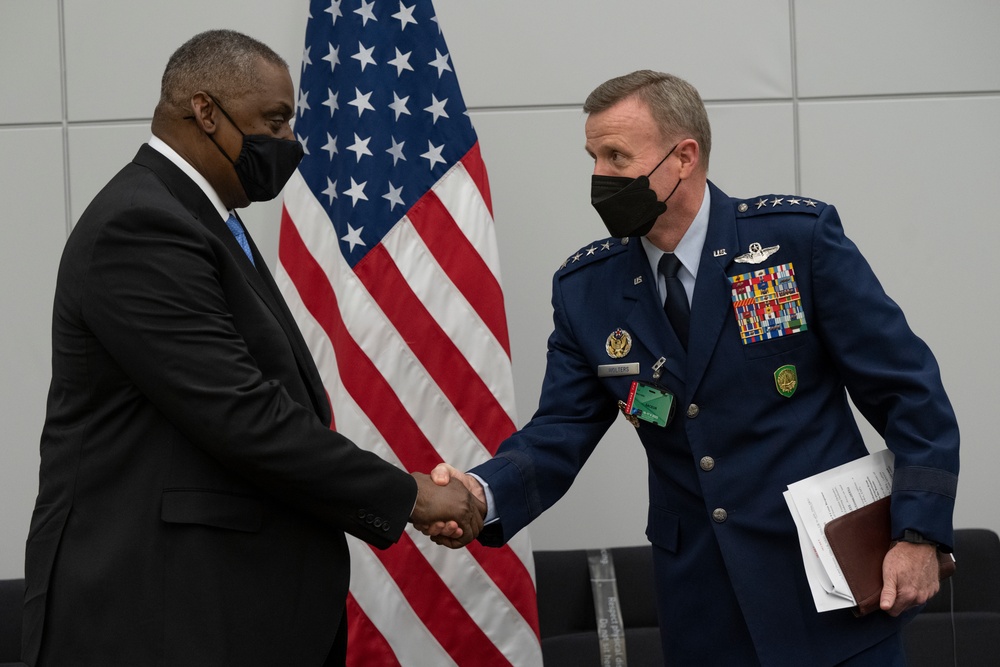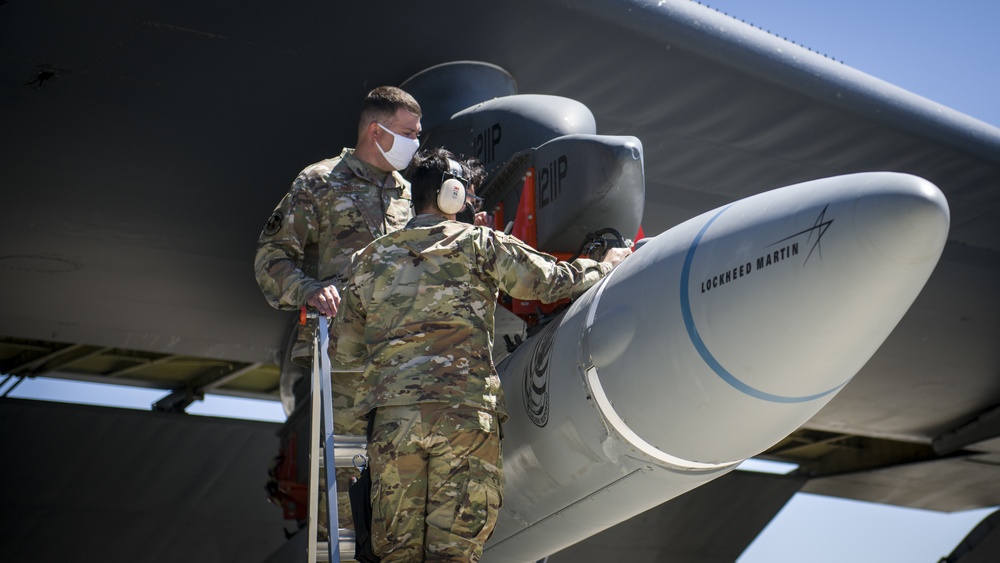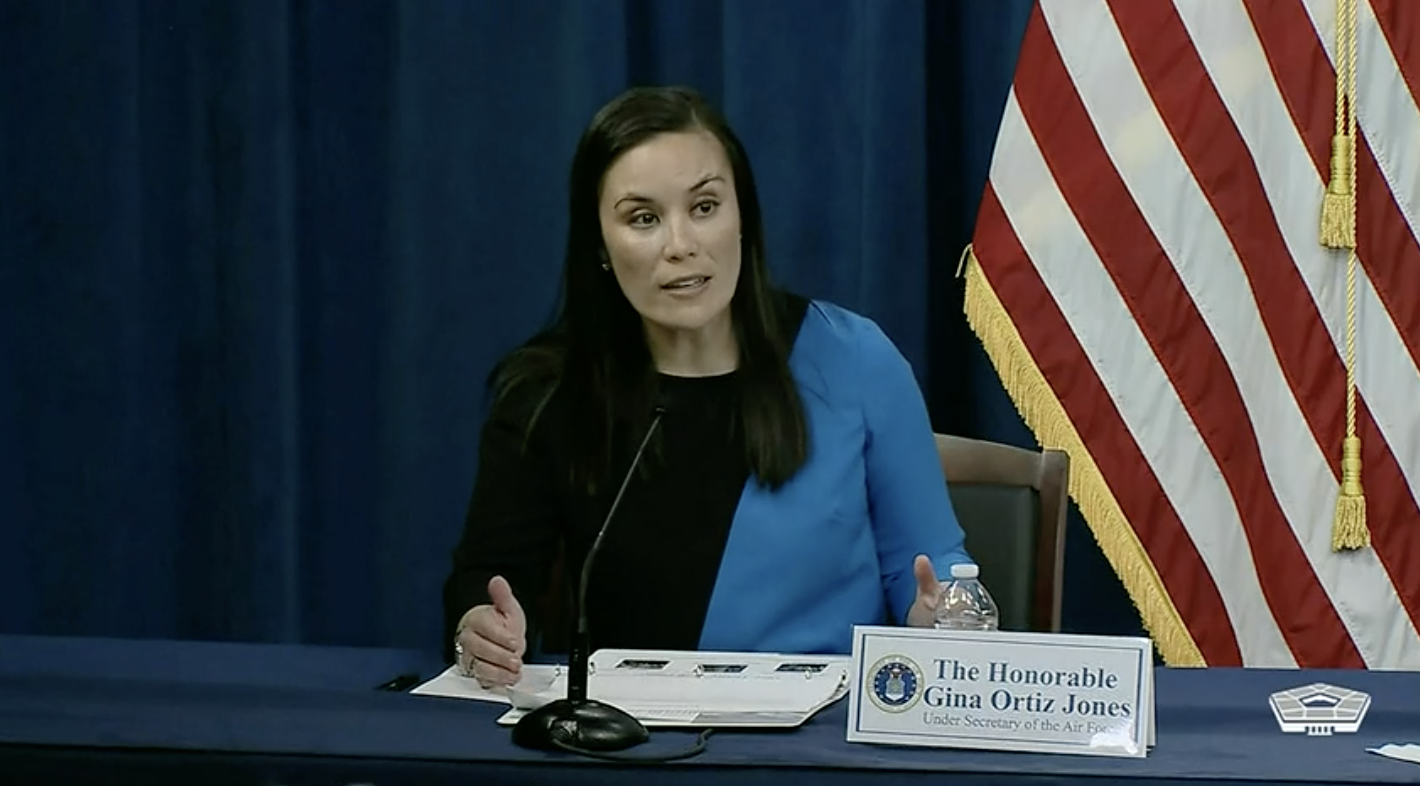The Department of the Air Force needs its largest research and development budget ever in the face of threats from China and Russia, the lead Air Force and Space Force budget planners said.
Air Force Lt. Gen. David S. Nahom and Space Force Lt. Gen. William J. Liquori joined Air Force Association president retired Lt. Gen. Bruce “Orville” Wright in a video discussion March 30—in the wake of the March 28 defense budget release—to make their case for sacrificing combat power now to meet Secretary Frank Kendall’s operational imperatives, including a call to “transition to a wartime posture against a peer competitor.”
“We’ve got to be able to evolve to more resilient architecture and be able to protect the things that we have out there today,” said Liquori, the Space Force’s deputy chief of space operations, strategy, plans, programs, requirements, and analysis, in response to a question from Air Force Magazine.
Changing missile threats, particularly maneuverable reentry vehicles and hypersonic missiles, drove the decisions to devote $3.48 billion to the Next Generation Overhead Persistent Infrared (OPIR) radar and $1.03 billion to resilient missile warning/missile tracking. Overall, the Space Force’s budget proposal to Congress gives $15.8 billion to research, development, test and evaluation (RDT&E).
The Space Force budget planner said the shift will lead to a hybrid architecture of satellites, a design concept reached after running thousands of simulations.
“In the case of missile warning/missile tracking, they took a look at hundreds of different architectural combinations, and for each one of those combinations, they ran thousands of runs on their computer systems to be able to see which ones performed the best,” Liquori said.
“If all we did was continue to field the systems that we have, we would lack resiliency,” Liquori said, explaining that current capabilities were put on orbit when space was a benign environment.
Resiliency achieved with a new architecture meets the threat posed by adversaries China and Russia, which maintain anti-satellite weapons that can operate from Earth and in space.
“If all we focus on is the here and now, we will never evolve to where we need to be and where we see the adversary evolving,” he said.
The Air Force slates $33.4 billion for RDT&E, fully 25 percent of the service’s budget.
Nahom, the Air Force’s deputy chief of staff for plans and programs, said his one-word answer to the question of investment versus near-term capability was: “balance.”
The Air Force budget planner pointed to the current Air Force effort to reassure NATO allies on the eastern flank as an example of how the Air Force has the capacity to cope with current threats.
“The Air Force is there, not to mention the Middle East, the Pacific Rim, and all around the world,” he said.
“We have to make sure that our Airmen have the current capacity they need to meet combat commanders’ need,” he added. “The RDT&E is so critical that we look to the future, and we look for what is out there and technology that can meet emerging threats.”
Nahom explained that the emerging need for the Air Force will be to contend with the long distances and ranges of the Pacific theater. The Air Force has been faulted for not buying enough F-35s in the current budget.
“We’ve been designing fighters for years [with] the European theater ranges in mind, from World War II right up to and including the F-35,” he said. “As we look at the future investment, we’ve got to account for going to greater distances, and potentially loitering longer with greater weapons loads. And certainly, we’re making adjustments to that.”

